Catfish is a freshwater fish and is so-called because of the whiskers on its head which are called Barbels. It doesn’t have scales, it has firm flesh and is good for most cooking methods and recipes. Catfish is excellent for frying, boiling, roasting and drying, it can be used in stews, soups, chowders etc. It is delicious any way you cook or process it. This post will take your catfish from the river to the cooking pot.
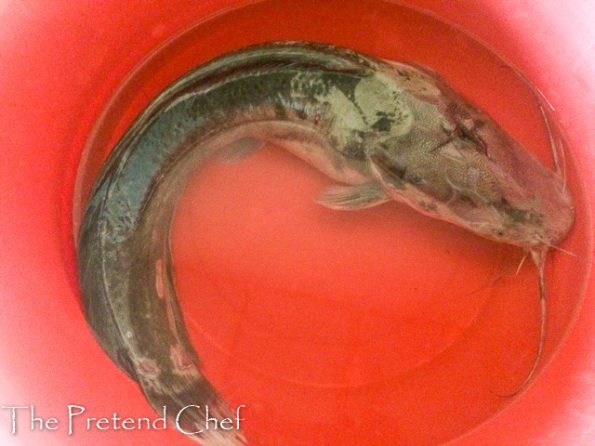
Most people have their catfish killed, gutted and cut up in the market by the fishmonger sometimes at an extra cost. This is very convenient and in my opinion, the only way to go, but you might go fishing or for whatever reason, find yourself with a live catfish that you need to kill, gut, cut up and wash, it then becomes a DIY project. Processing catfish is not very difficult although you will need some courage. Also, bear in mind that catfish will survive for a long time outside the water.

So besides killing the catfish, the other problem is the slime. This slime is important for the survival of the fish, the cells produce a glycoprotein, which mixes with water forming this slimy mucus. It protects the fish against parasites, covers its wounds etc. In the kitchen, however, slime is a problem for the chef. Though this slime is not dangerous when eaten, it just grosses people out. It is necessary to get rid of the slime before cooking the fish.
*A note of warning about handling the catfish
The fin on top (dorsal fin) and the two on each side of the head (pectoral fins) have a very stiff, pointed and sharp spine that contains venom. If that spine pierces the skin, the venom can get into the skin causing pain and swelling. If not careful, even with the dead fish, it can still prick you and it is very painful. The smaller fish have sharper spines. In case of a sting, see http://www.emedicinehealth.com/catfish_sting/page2_em.htm#catfish_sting_treatment
How to Process catfish
How to remove the gut of a catfish
Whole fish is perfect for cooking my Point and kill (baked catfish in pepper sauce). Trim off the fins.
- Make a cut through the skin from the neck (under the gill plate) to a small hole on the belly towards the tail (the anus). Don’t insert the knife too deeply.
- Pull out the insides, cutting any ligaments holding it to the fish at either end and being careful not to pierce any organs, especially the gallbladder. The gallbladder is a small sac containing bile, a green or yellow liquid that is very bitter and, if broken, will seep into the flesh of the fish, making it bitter.
- Rinse out the empty cavity thoroughly and use.
Cut Catfish into steaks (cutlets). See my Catfish pepper soup (Point and kill).
- Make a very wide cut on the neck under the gill plates.
- Pull out the insides (entrails) through this cut, cutting any ligaments holding it to the fish at either end, being careful not to pierce any organs, especially the gall bladder. The gall bladder is a small sac containing bile, a green or yellow liquid that is very bitter and, if broken, will seep into the flesh of the fish, making it bitter.
- Rinse out the empty cavity thoroughly and use. That way you will get clean round steaks.
To cut catfish into steaks
You can cut your catfish before or after washing. If you killed and gutted it in the market, chances are they cut it up for you. This is best unless you are cooking it whole.
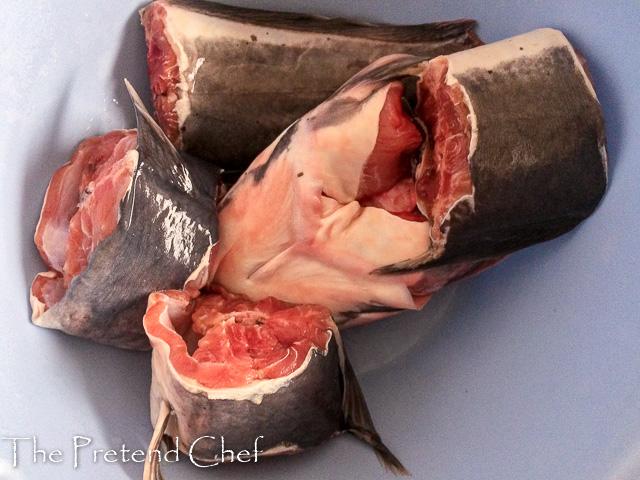
If you are cutting your catfish before washing, it will be slimy and slippery, so place an old piece of kitchen napkin or paper towel on the chopping board. Place your fish on top, being careful, cut it into sizable portions across the fish. It can also be cut into fillets.
To remove catfish slime
There are different ways to remove the slime, use whatever method you are most comfortable with.
Hot water
- Wash the catfish then place it in a large bowl and set aside.
- Heat up enough water to cover your fish. When water is very hot, pour over the catfish to cover it.
- Leave for 1-2 minutes, the slime will curdle and turn whitish.
- Drain and pour cold water on it to prevent the residual heat from cooking your fish.
- Proceed to wash off the curdled slime with cold water.
The flesh will immediately firm up and you will notice the once floppy catfish will be firm to touch. This prevents it from disintegrating during cooking.
It is particularly good when cooking Fresh fish pepper soup, Nigerian fish stew (imoyo) etc. or any dish where the fish will be agitated and handled a lot.
Note
- If the water is too hot or if the fish is left for too long in hot water, the skin of the fish might be compromised.
- Also, the length of time the fish is in contact with the hot water is so short that if any nutrients leach out, they are so very minimal compared to the advantages of the hot water method.
- If the smell is too fishy, add a little vinegar to the hot water.
Salt
- Rub salt generously all over the skin of the catfish.
- Rinse with cold water. Repeat several times until all the mucus is gone.
- If the smell is too fishy, add a little vinegar and salt in lukewarm water and rinse the fish in it.
This method takes quite some time to get the slime off.
Alum
- In a basin, pour enough water that can cover the fish.
- Drop a little alum into the water and stir to dissolve.
- Place your catfish in the water and leave it to stand for 2 minutes.
- The alum will congeal the slime, drain and rinse thoroughly in cold water until it is clean.
This method might affect the taste of the fish especially if left for too long.
Ash
- Sift ash got from cooking with firewood to remove large pieces and stones which can cut through your fish skin.
- Proceed to rub the ash all over the catfish skin then rinse very thoroughly with clean cold water.
Lemon
- Cut a lemon or lime across.
- After washing your catfish, rub the lemon or lime all over the skin of the fish.
- Rinse well in cold water. Repeat until the fish is clean.
I will not use this method if I am cooking most native Nigerian dishes unless I don’t mind the faint taste of lemon coming through in the cooked dish. It is best suited to roasted, fried, grilled fish etc.
Vinegar
- In a basin, mix vinegar and water in a 1:2 ratio or even a 1:3 ratio. That is 1 cup of vinegar to 3 cups of water.
- Pour it all over the catfish or dip the fish and roll in the vinegar mix, you can also mix in a spray bottle and spray this mixture on the fish.
- Leave to stand for a few minutes, you will notice thick white stuff that looks like curdled milk all over the fish.
- Proceed to scrape it off and rinse thoroughly in cold water. Do not leave vinegar too long on the fish.
The catfish is ready for the pot. Use in Catfish fish pepper soup (point and kill), Nigerian fish stew (Imoyo), and Baked catfish in pepper sauce (Point and kill).
Also, learn all you need to know about the Nigerian dry fish and How to wash it.
Do you have any comments, questions or suggestions, please leave a comment below.
Share this recipe using the share buttons.
Subscribe to the blog for instant notifications of new recipes.
Follow on Instagram: @thepretendchefofficial, Twitter: @thepretendchef Facebook: https://web.facebook.com/thepretendchef/, Pinterest: https://www.pinterest.com/thepretendchef/
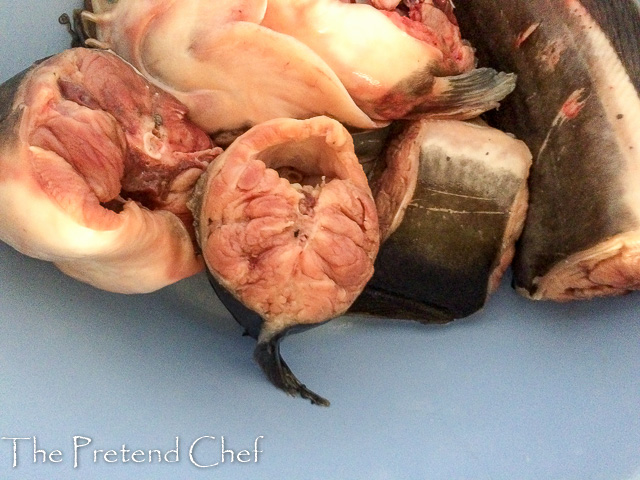
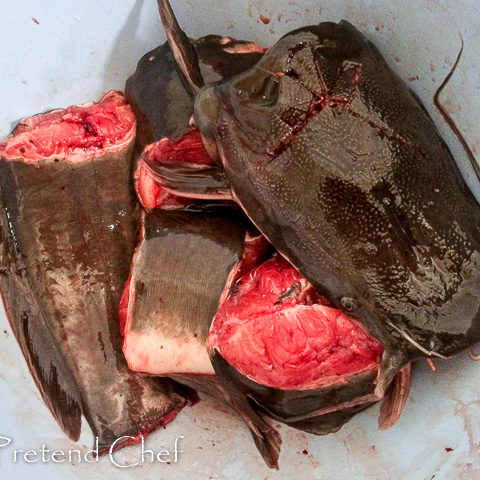
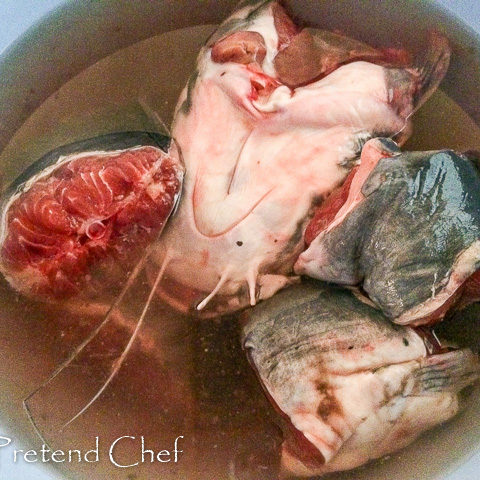
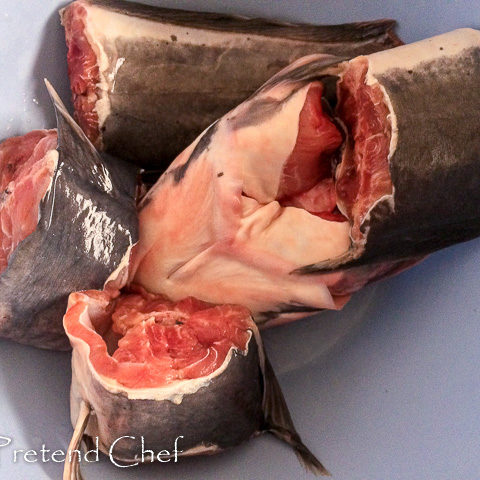
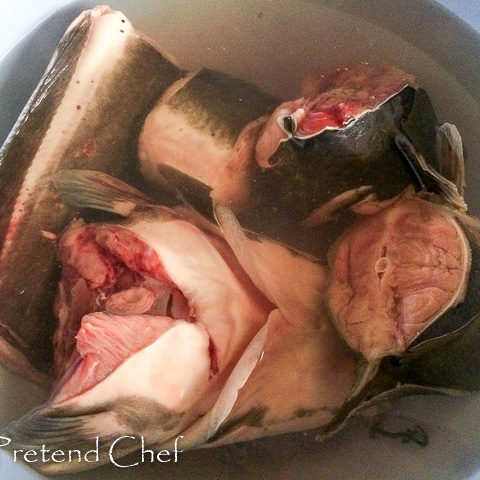
 I am Ganiru, a wife, a mother, a food blogger, a chef, an author and an accountant. I love to cook and write about food, especially Nigerian and afro-centric food...
I am Ganiru, a wife, a mother, a food blogger, a chef, an author and an accountant. I love to cook and write about food, especially Nigerian and afro-centric food...
Pingback: How to kill a catfish - The Pretend Chef
Thanks very much for this information
Pingback: Catfish pepper soup (Point and kill) - The Pretend Chef